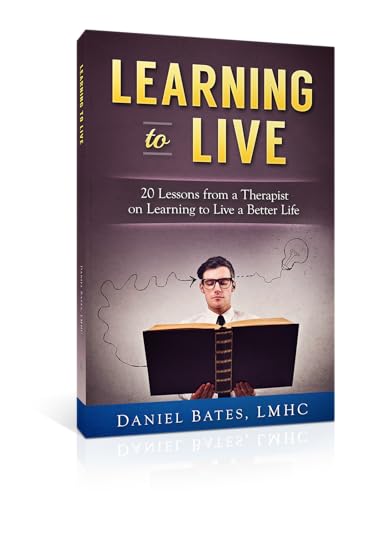Daniel Bates's Blog, page 2
June 30, 2017
9 Rules of Fair Fighting

No Shot Gunning: Shot Gunning is when you throw several objections, complaints or grievances at the other person, all at once. This simply is too much to respond to and isn’t fair. Pick one thing to talk about.
Cheap Shots: This is when you address a problem or give feedback to another person laced with critiques, personal attacks and button pushing. It’s not fair to mock and deride someone while trying to address a serious issue. It knocks them back on their feet and doesn’t lead to a positive resolution.
Changing the Subject: When you bring up one issue, and then in the middle of the conversation, you change the subject because you don’t want to take responsibility, or you want to throw the other person off. Either way, changing the subject is frustrating and dilutes the focus of the conversation.
Open Personal Attacks: If you are engaging in a conversation strictly for the purpose of inflicting hurt on the other person because you feel hurt, the conversation won’t end well. Maintain respect. Act in the way you wish to be treated.
Bringing Up Past Mistakes: If you bring up an issue, problem, example, or hurt that is from the past, that bears no relevance to the conversation, then don’t bring it up. You are likely bringing up to throw that in the other person’s face. Doing so is unproductive, unnecessarily sours the conversation and bait the other person into “tit for tat” mudslinging.
The Blame Game: Blaming the others person for your feelings is unfair. Or, blaming the other person for a shared problem. Take credit for your part in the problem. When needed, take personal responsibility and ownership. If you can do that, then the conversation is pointless.
Take Turns Talking: If you do not like being interrupted, then do not interrupt the other person. Listen to what the other person has to say, even if you disagree. When they are finished, then you can talk.
Have the Right Intentions: The why behind the conversation determines how the conversation goes. If you enter the conversation simply to win points, inflict as much damage as possible, prove that you are right, or prove that they are wrong, you are in the conversation for the wrong reasons. If you enter the conversation for mutual understanding, even if you don’t fully agree at the end of the conversation, respect will be maintained and that is a success in itself.
Be Charitable: If your conversation partner misspoke, stated something the wrong way, but meant something else, or is unclear, give them the benefit of the doubt that they mean well. Listen to them charitably. Respond to them graciously. Maintain respect, even if you don’t feel respected.
March 10, 2017
Learning to Live Book Release!
Learning to Live isn’t your typical self-help book. Learning to Live contains 20 chapters, each one like a mini session with an experienced mental health counselor. The chapters address a wide array of mental health topics. The central focus is to help you become unstuck and learn the lessons that can free you. However, learning is a process and sometimes you need expert outside help that can help.
So instead of spending money counseling session, pick up Learning to Live and reap the benefits of counseling now!
Learning to Live is available in paperback and Kindle on Amazon.
February 4, 2017
The People Pleasing Cure: Boundaries
Boundaries are the gateway to healthy relationships. Yet, for many, boundaries are hard to establish and enforce. Listen this podcast for expert advice on how to establish and enforce boundaries.
February 2, 2017
The Problem of Focusing on Symptoms and Not Causes
Individual blame and negativity comes with many problems. When individuals act out that is the symptom of a relational, family systems problem. You need to readjust your perspective to family causes that lead to individual problems.
January 28, 2017
Thinking Errors and How to Fix Them

If you were out hiking and came across a stream, would you immediately start drinking? What if the water was contaminated? If the water was questionable, you wouldn’t drink, right? But you need water so what do you do? Many hikers don’t even worry about contaminants because they have filters, which take out the bad and leave the good. But what if your filter doesn’t work? How can you trust your water? Remove the word water and replace it with thoughts.
You have a mental filter. A filter of ideas, like a water filter, allows you to identify and extricate what may be harmful and be able to keep what’s good. The way we cognitively evaluate and assemble our beliefs is through what psychologists call a schema. It is a mental structure that sifts through ideas, events, and relationships to form an interpretation.
This interpretation, good or bad, determines how we respond behaviorally and what we feel in response to these things. But sometimes our filters can be faulty. For example, we can have false beliefs within our schema or apply the wrong schema to any given situation, so whatever is run through the filter (schema) will come out tainted.
The idea of cognitive distortions, or another way of putting it, thinking errors, is from Cognitive Behavioral Therapy, a psychological and counseling model created by the late Aaron T. Beck. Thinking errors are defined as systematic errors in reasoning. The way you think is so important. What you think determines what you believe about yourself, others and the world. Those beliefs determine how you behave.
Discovering your thinking errors can be a painful process, but there is hope. Examining and changing distorted ways you think is liberating. The work is hard, but the benefits outweigh the costs. There is power in naming problems. That is why every single Alcoholics Anonymous meeting begins with “Hello, my name is…and I’m an alcoholic.” In the same vein say with me, “Hello, my name is… and I’m a person who struggles with thinking errors.”
Admitting a problem is the first step involved in change. But what do you do after that? What are some practical steps you can take to change your thinking errors?
5 Steps to Challenge and Change Thinking Errors
Step 1: Identify the Thinking Error. Thinking errors can relate to anything. I wrote a book specifically regarding the thinking errors parents make. But there are all sorts of thinking errors regarding work, school, intimate relationships, sports and so on. Some of the most common thinking errors you can find by clicking on this link. Whatever your thinking error is, you can’t change it until you become aware of it. And, you need to become aware of it when its affecting you in the moment, in real-time.
Example: Black and White Thinking– this is the thinking error that people, events, and experiences are interpreted in rigid, binary categories; you are either this or that, good or bad, honest or dishonest, fun or boring. So, for example, if your first experience of flying on a plane is unpleasant, than you would reason, distortedly, that flying on planes are bad, they will always be bad, and every time you fly the experience will be bad.
Step 2: Understand How the Thinking Error Makes You Feel and Behave. Distorted thinking drives distorted feelings and behaviors. Therefore, you need to understand how the distorted thinking influences you.
Example: The thought of flying makes you anxious and irritable. You avoid flying at all costs and discount positive experiences of flying as being a “fluke.”
Step 3: Find Reasons and Evidence that Support or Counter the Thinking Error. When you’ve identified what your thinking error is, and how it affects you, the next step is to challenge the thinking error. That means, you need to rationally work through reasons that support the thinking error, and reasons that counter it.
Example: Challenge the assumption that flying is bad. First, find supporting evidence: flights have turbulence. Sometimes planes crash. Flying can be expensive. Second, find counter evidence: Flying is the safest form of travel. Its relatively inexpensive. Its faster than driving in most cases. Turbulence is normal. Plane crashes are extremely rare. Driving is far more dangerous.
Step 4: Conclude with Reality-Based, Accurate, Positive Thinking. Weigh the supporting evidence against the counter evidence and let that determine your thinking.
Example: Flying is safe. There will be turbulence, but turbulence doesn’t signal danger, and its infrequent. There is some risk, but it is the safest form of travel. And, in many cases, its the most expedient. Therefore, flying is mostly good, with some minor problems. This is a more accurate way of thinking that isn’t rigid, recognizes that flying doesn’t fit into one category or the other, of good or bad.
Step 5: Choose New Behaviors In-Line with the New Thinking. Distorted thinking ruins opportunities, makes you avoid certain things, keeps you from new experiences, and steals your joy. Accurate, reality-based thinking liberates you to enjoy life and to be mentally healthy. Healthy thinking leads to healthy feeling and behaving. Challenging thinking errors lead to an accurate perception of the world, others and yourself.
Example: There is no reason to avoid flying. I can travel the world, see long-distance family and friends, and have new experiences afforded to me through flying. Flying is not something to fear or avoid. I don’t need to feel anxiety or stress.
January 27, 2017
How NOT to Motivate Your Child
Parents can have the best of intentions when trying to motivate their kids. But not all motivational methods are created equal. There are methods that can backfire. Listen in on what not to do.
January 26, 2017
The Hidden Benefits of Doubt
Doubt isn’t altogether bad. Psychologists have distinguished two types of doubt: self-doubt and thought-doubt. Thought-doubt has many psychological benefits whereas self-doubt can be destructive.
January 21, 2017
Empowering Kids Who Want to Parent
How should a parent respond when older siblings want to parent younger siblings? Older siblings wanting to parent younger siblings is an altogether bad thing or can it be a good thing?
January 13, 2017
How to Parent Willful and Stubborn Kids
In this episode I explore the various strategies and techniques parents can employ to get better outcomes with their stubborn and willful children who wont accept their parents authority.
January 6, 2017
You Are the Problem AND The Solution
Counseling can fail for many reasons. However, there are things that clients can do to get the most out of their counseling experience. Listen to two reasons why counseling fails and what clients can do differently.




